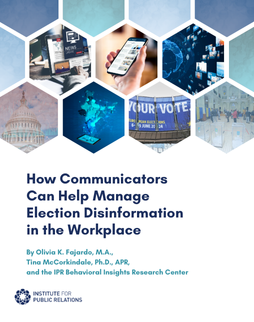This blog is based on the original study in the Public Relations Journal.
Scholars have argued that social presence strategies could be a gateway to public engagement. Communicators use social presence to reflect genuine and real personalities to build relationships (Mazid, 2020; Men, Tsai, Chen, & Ji, 2018). However, social presence strategies have received limited scholarly attention from political public relations scholarship. This study addressed this gap by investigating the relationships between social presence strategies, vividness strategies, and engagement.
This study had four main objectives. First, it investigated the use of social presence strategies (such as posting videos on social media) by U.S. Senate candidates. Second, gender and political party affiliation were tested to determine the use of social presence strategies. Third, the study examined vividness strategies (defined as “the degree to which information addresses various senses”), on Facebook messages (Schultz, 2017, p. 24). Fourth, the research investigated the connection between social presence strategies, vividness strategies, and engagement.
Facebook data of Democratic and Republican Senate candidates were downloaded for this study. Content analysis of 1,500 posts revealed significant predictors of engagement on Facebook. Analysis showed that social presence strategies are strong determinants of engagement.
Public relations scholars, political campaign managers, and political actors could develop a solid understanding of social presence theory and political campaigning on Facebook by examining the results of this study. This study extends our scholarly knowledge of social presence theory by examining the use of the theory in a new communication context: Senate election campaigns. This study tested two independent variables—gender and political party affiliation in determining the use of social presence strategies by political candidates.
Results demonstrated that social presence strategies could play a role in triggering engagement. Such findings are vital for public relations professionals. Public relations professionals could apply the insights of this research to formulate political campaign messages on Facebook. Political campaigns often invest resources and work tirelessly to strengthen the reach of their messages. This study demonstrated that social presence strategies could help public relations professionals to increase the reach of their campaign messages.
This study showed that high vividness or video content efficiently generates comments, and the medium vividness messages significantly predicted likes. However, this result is different from previous studies, which documented the efficacy of video messages (Jain, Zaher, & Mazid, 2020). This study revealed that video messages were not very helpful in generating likes and shares on Facebook compared to low-vividness messages. The recent prominence of video-based content and stories indicates that social media users are more interested in video content, and there will be an increase in such content. Then, we may ask why video content posted by political candidates is not helpful in generating engagement. The answer may be the content of the videos. Political campaign managers may pay some attention to testing video content’s efficacy before posting such content on social media sites.




